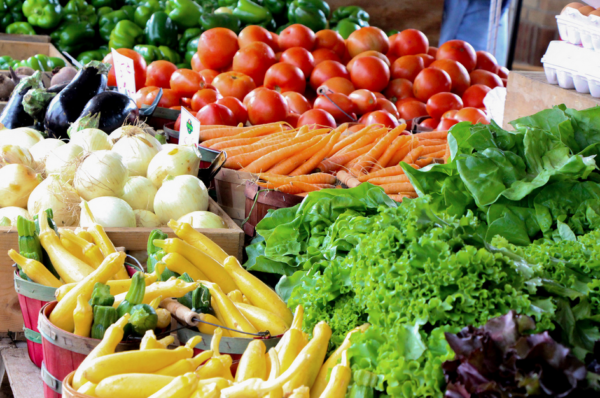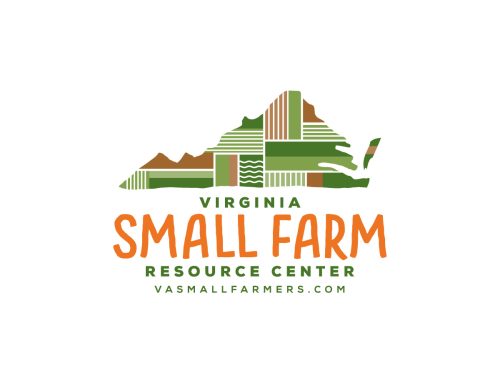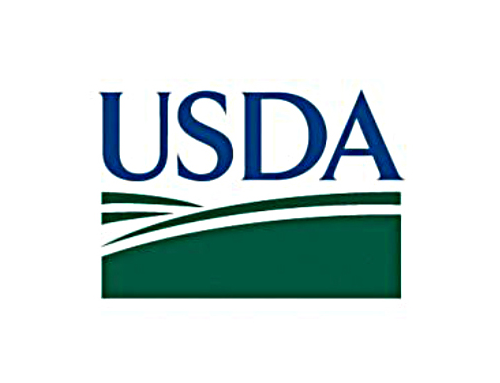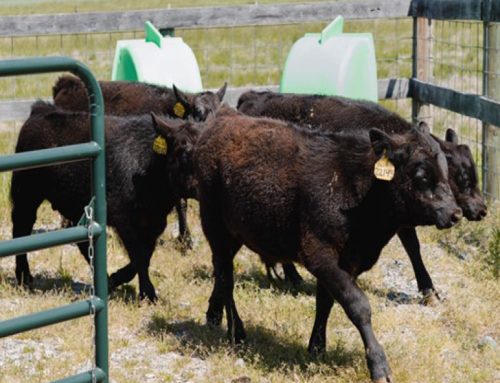
An expanding market for local food promises great opportunities for producers, but it will need support from federal programs. Photo Credit: Lindsey Scalera
The following economic impact assessment was compiled on March 18, 2020 for the National Sustainable Agriculture Coalition by Dawn Thilmany, Becca Jablonski, Debra Tropp, Blake Angelo, and Sarah Low. More information about the authors can be found at the end of the document. Last updated March 21, 2020.
Bottom Line
Across key local and regional markets (i.e., farmers markets, farm to school, food hubs serving other institutions, and restaurants) we expect to see up to a $688.7 million decline in sales leading to a payroll decline of up to $103.3 million, and a total loss to the economy of up to $1.32 billion from March to May 2020. Without immediate mitigation, we may lose many small, socially disadvantaged, and beginning farms and the important markets they serve.
Policy Recommendations
- Explicitly Include Local Food and Farm Businesses in Small Business Support Programs: Declare local farm and food assets as key community assets. Require emergency food assistance dollars flowing to communities to support local farm and food businesses. Explicitly integrate local farm and food business into all small business, workforce and emergency payments/loan programs.
- Expand Incentives for Small Food and Farm Businesses to Move Online: Aggressively encourage farmers to integrate online ordering/sales platforms, as increasingly states (e.g., CT) are requiring practices that limit customer interaction.
- Accelerate Waivers and Expand Flexibility for Current USDA Programs: Leverage congressional and executive authority to waive limitations on the reach of feeding programs’ ability to purchase food from local and regional suppliers. Relax expenditure limitations so that current USDA award recipients can innovate and rapidly respond to community needs, e.g., Michigan reported that due to lost sales at schools, their Michigan Farm to Freezer program is shifting to freeze items for other markets. Expand and add flexibility to the LAMP and Value-Added Producer Grant Programs so future awards incentivize innovations that enhance rapid responses to future supply disruptions.
Context
Among the businesses facing losses as a result of COVID-19 are the farms and ranches that sell through local and regional food markets. Social distancing measures such as the closure of universities, schools, restaurants, and local food markets (e.g., farmers markets, farm stands) will result in significant shifts in where food is sold or acquired, and subsequently, markets for farms and ranches. The Congressional Research Service estimated local food sales at $11.8B in 2017 (Johnson 2019), with nearly 8% of U.S. farms and ranches (159,000 operations) participating (USDA NASS 2017). The vast majority (85%) of participating farms and ranches are small. Further, about one in four beginning farmers and ranchers use local food markets to differentiate their product (and get prices above commodity pricing) (USDA NASS 2018). Census data from 2007 and 2012 show that beginning farmers that had local food sales had higher average survival rates across all sales classes (Low et al. 2015), and that local food markets can support profitable operations, even at the lowest sales categories (Bauman et al. 2018).
Projected impacts by selected market, based on March-May period of social distancing:
This short brief provides a preliminary attempt to estimate economic losses to the local and regional food sector in the U.S. and additional guidance for policymakers as they evaluate solutions that will minimize negative impacts to small businesses and rural economies.
1) Farmers Markets
- Using estimates from the 2017 Ag Census and recent USDA ARMS data, we estimate $2.4 billion in sales through farmers markets. Since it is an early part of the season and some markets may continue to operate with social distancing measures, we assume 10%, or at maximum 25% of annual sales will be lost.
- Assuming a 10% loss in market sales resulting from COVID-19, there would be a $240 million decline in sales, leading to a $36 million decline in payroll given estimates of the labor share of revenues paid by farms marketing to local markets.
- Assuming a more significant 25% loss in market sales resulting from COVID-19, there would be a $600 million decline in sales, leading to a $90 million decline in payroll paid by farms marketing to local markets.
- The multiplier effect of a loss of $240-600 million in sales would lead to an estimated loss to the community economy of: $460 million- $1.15 billion based on the USDA AMS Local Food Impact calculator: https://calculator.localfoodeconomics.com/
Other Important Issues to Note regarding Farmers Markets:
- The March-May season of the market year is mostly a start-up phase, particularly outside of the Southern U.S. and California, so the range of lost sales was hard to forecast, and the range of 10-25% of annual revenue was deemed reasonable to present as an estimate. In contrast, if the early season for a market is cancelled, it may be a tipping point leading some marginally performing markets to close for the whole season (or permanently).
- As part of its new shelter in place policy, many cities, including the city of San Francisco has deemed farmers markets part of “essential infrastructure” along with grocery stores and food banks (see https://sfmayor.org/article/san-francisco-issues-new-public-health-order-requiring-residents-stay-home-except-essential). Such policies should be encouraged, and perhaps provided financial and technical support, given food supply chains continue to be disrupted.
- 8% of local food farms had an online marketplace in 2015. These farms had higher local food sales and value-added sales, suggesting online is a viable platform for food farms that could be expanded. Technical assistance for developing online platforms and additional broadband infrastructure could both help with this supply chain disruption but also buoy future food farm sales.
2) Farm to School
- Based on data collection from state farm to school coordinators, and state agencies, we estimate a 10% loss in farm to school sales resulting from COVID-19. Total farm to school purchases were $789 million during the 2013-2014 school year. We assume that 1/3 of these sales were direct from farms ($263 million), whereas the remaindermoved through an intermediary (e.g., food hub, DOD Fresh, $526M). For the intermediated sales, we assume that the farm received 70% of the price the school paid ($350M) after subtracting the distributors’ mark up. 10% loss of $263 million + $350 million = $61.3 million.
- Given estimates of labor share of local farm market revenues, this would equate to $9.2 million in lost payroll.
- The multiplier effect of a loss of $61.3M in farm to school sales would lead to an estimated loss to the community economy of: $120.3 million based on the USDA AMS Local Food Impact calculator: https://calculator.localfoodeconomics.com/
Other Important Issues to Note regarding Farm to School:
- The March-May period of the school year represents the smallest overall portion of farm to school purchases, particularly outside of the Southern U.S. and California, thus lost sales for farms would have been worse if the outbreak had occurred during a different part of the school year.
- States are mixed in how school vendors/supply chains are impacted by the shift from school meals to emergency feeding programs. However, even most states that report using the same suppliers in the emergency feeding programs as in the schools, there appears to be a change in preference to shelf-stable, non-perishable items which farm enterprises and food hubs are less likely to supply.
3) Food Hubs Serving Other Institutions (Beyond Farm to School) and Restaurants
- With the majority of states completely closing restaurants and universities (and dining halls) for 30 days (or more), we assume significant losses in sales (20% of annual sales)
- Direct sales by farms to restaurants and institutions other than K-12 schools (Universities) are an estimated at $40 million.
- We assume most sales moved through a food hub as an intermediary. Extrapolating from numbers reported in the 2017 Food Hub survey, approximately $108 million was sold to restaurants and caterers and $30 million was sold to Universities. Again, for sales through hubs, we assume that the farm received 70% of the price paid ($97 million) after subtracting the distributors’ markup. 20% loss of $40 million + $97 million = $27.4 million.
- Given estimates of labor share of local farm market revenues, this would equate to $4.1 million in lost payroll.
- The multiplier effect of a loss of $27.4 million in restaurant and institutional sales would lead to an estimated loss to the community economy of: $52.5 million based on the USDA AMS Local Food Impact calculator: https://calculator.localfoodeconomics.com/
Other Important Issues to Note Regarding Food Hubs Serving Other Institutions (Beyond Farm to School) and Restaurants:
- At least 14 states have already closed or limited restaurant operations, according to the James Beard Foundation.
Data Sources
Given the rapidly evolving nature of the virus, as well as government responses, we utilized the best available information to formulate our scenarios and estimate potential impacts.
- U.S. Department of Ag, National Ag Statistics Service, 2017 Census of Agriculture
- U.S. Department of Agriculture, National Agriculture Statistics Service, 2018. Highlights: Beginning Farmers – Characteristics of Farmers by Years on Current Farm https://www.nass.usda.gov/Publications/Highlights/2014/Beginning_Farmers/index.php
- U.S. Department of Ag, National Ag Statistics Service, 2015 Local Food Marketing Survey
- U.S. Department of Agriculture, National Agriculture Statistics Service/Economic Research Service, Agricultural Resource Management Survey
- Bauman, A. G., D. Thilmany McFadden, and B.B.R. Jablonski. 2018. The financial performance implications of differential marketing strategies: Exploring farms that pursue local markets as a core competitive advantage. Agricultural and Resource Economics Review. 47(3):477-504.
- Low et al. 2015. Trends in local and Regional Food Systems. Report to Congress. U.S. Department of Ag, Economic Research Service, Administrative Publication Number 068.
- Low, S. and K. Thompson. 2020. Could Online Sales Be a Direct Marketing Opportunity for Rural Farms? University of Missouri Extension Guide G6224. https://extension2.missouri.edu/g6224
- Johnson, R. 2019. 2018 Farm Bill Primer: Support for Local Food Systems. Congressional Research Service IF11252 https://fas.org/sgp/crs/misc/IF11252.pdf
- Primary data collected from member states of the National Farm to School Network, 3/17/2020-3/18/2020
- MSU and Wallace Center’s 2017 National Food Hub Survey
Authors
This economic impact assessment was developed for the National Sustainable Agriculture Coalition by the following:
Dawn Thilmany
Colorado State University – College of Agricultural Sciences
Associate Department Head
Professor – Outreach Coordinator
Extension Economist-Labor and Agribusiness Management
Ph.D.: University of California, Davis
Becca Jablonski
Colorado State University – College of Agricultural Sciences
Assistant Professor and Food Systems Extension Economist
Ph.D.: Cornell University
Sarah Low
University of Missouri – Collage of Agriculture, Food, and Natural Resources
Associate Professor of Regional Economics
Agricultural and Applied Economics
Fred V. Heinkel Chair in Agriculture, Agricultural and Applied Economics
PhD, Agricultural and Consumer Economics, University of Illinois Urbana-Champaign, 2009
Debra Tropp
Principle at Debra Tropp Consulting
Retired USDA Agricultural Marketing Service Deputy Director, Local Food Research and Development Division
Blake Angelo
Governor Appointed Colorado Food Systems Advisory Council, Coordinator




